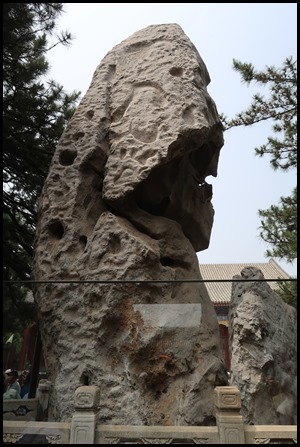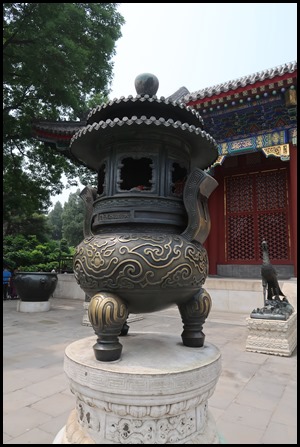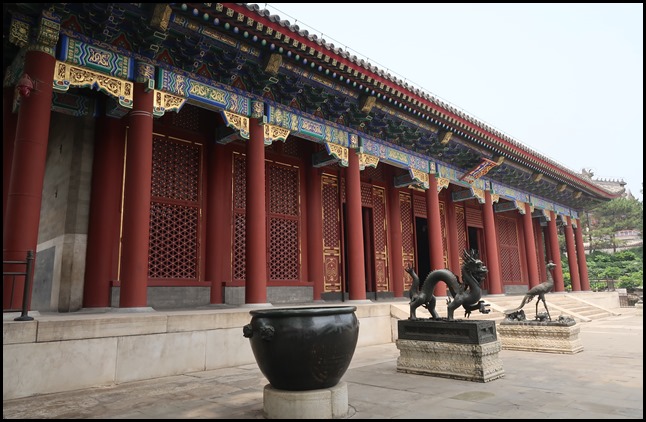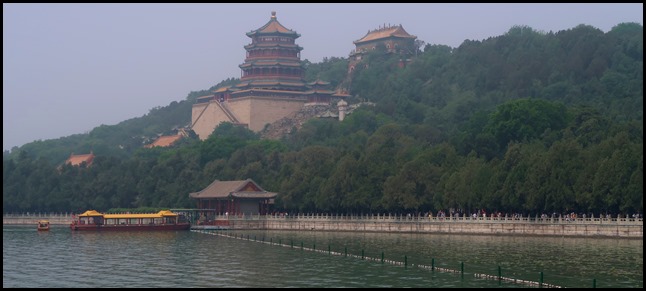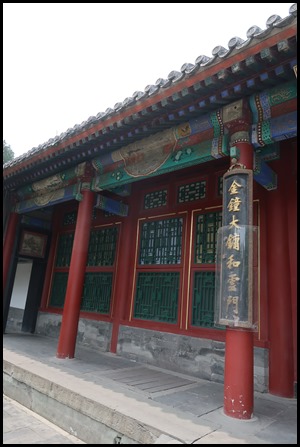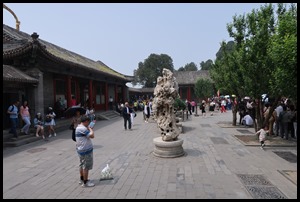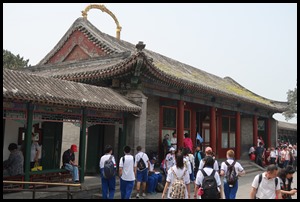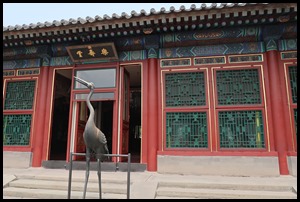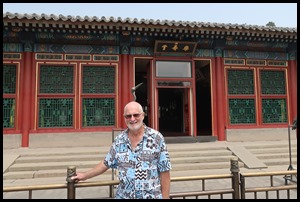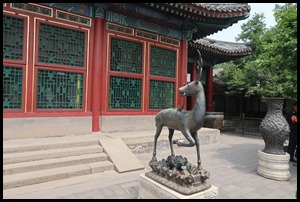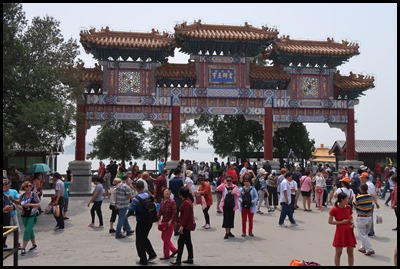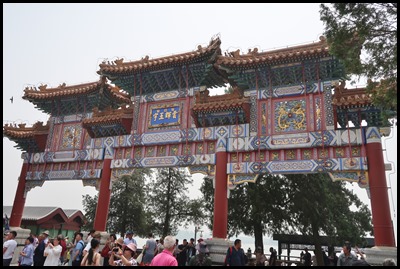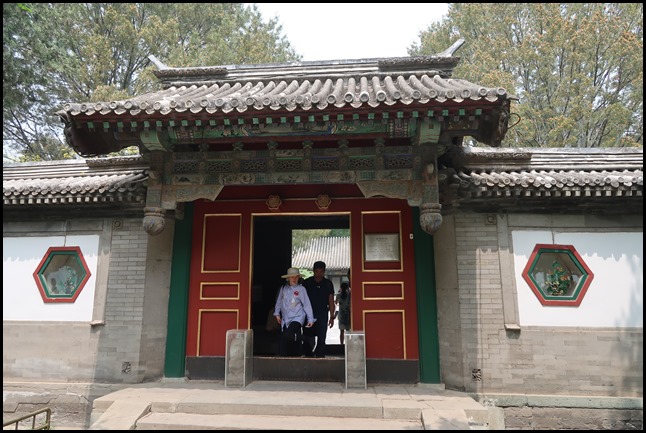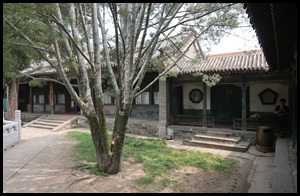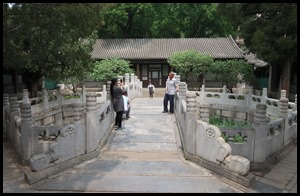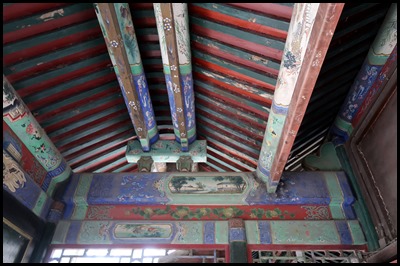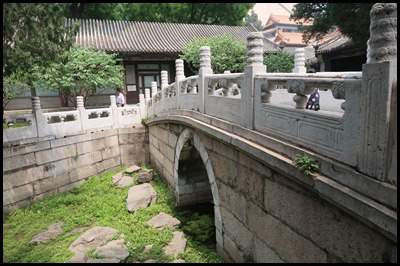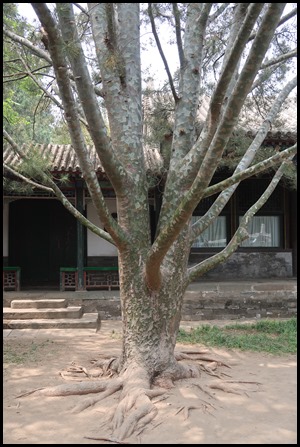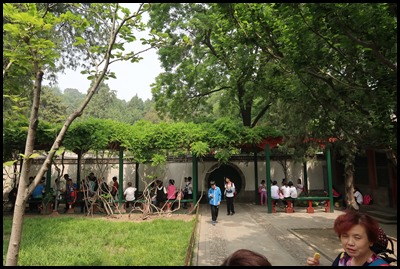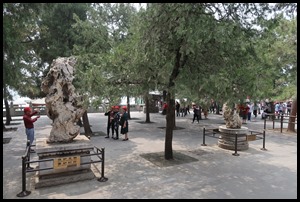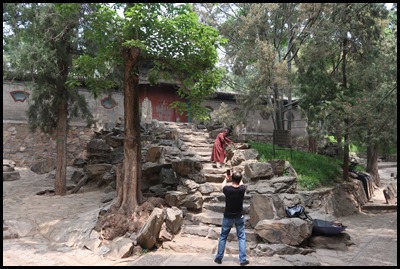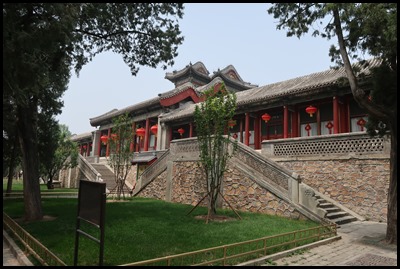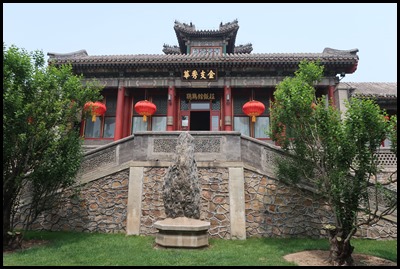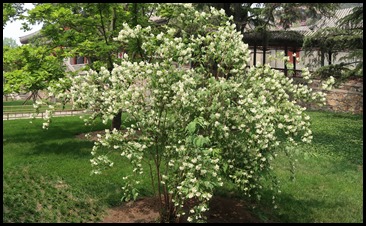Summer Palace, Beijing

|
Summer Palace, Beijing
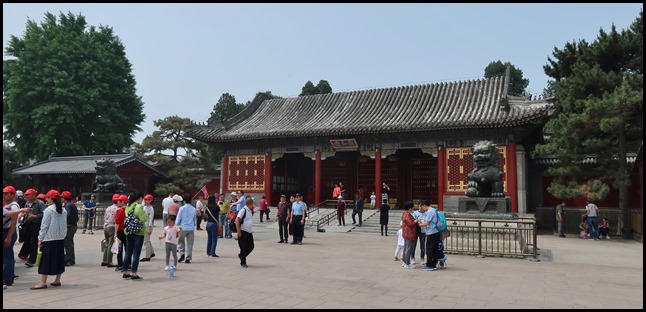  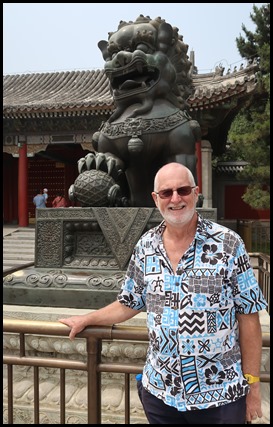 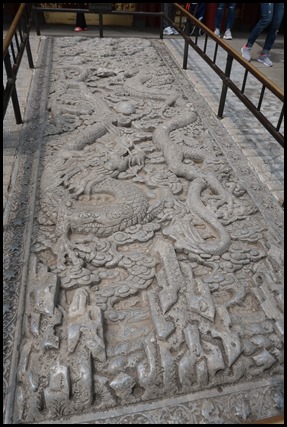 An hour in a car from our digs in the
city, through rush-hour and we were standing at the public
entrance to the Summer Palace. After posing
with the female (Xiu) and male (Pi) guardians we
admired the carved path between the sets of steps and
in we went.
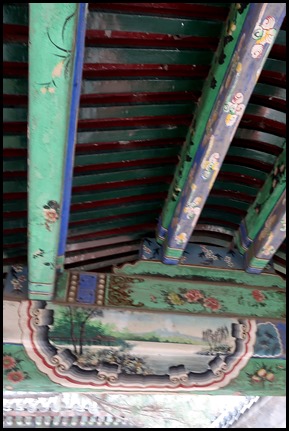 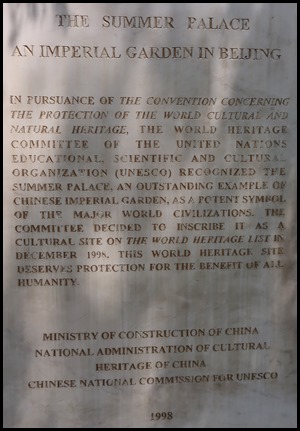  The entrance roof was a delight, covered with lovely paintings and coloured beams. Inside we looked at the Special Listing memorial
tablets and headed for the maps.
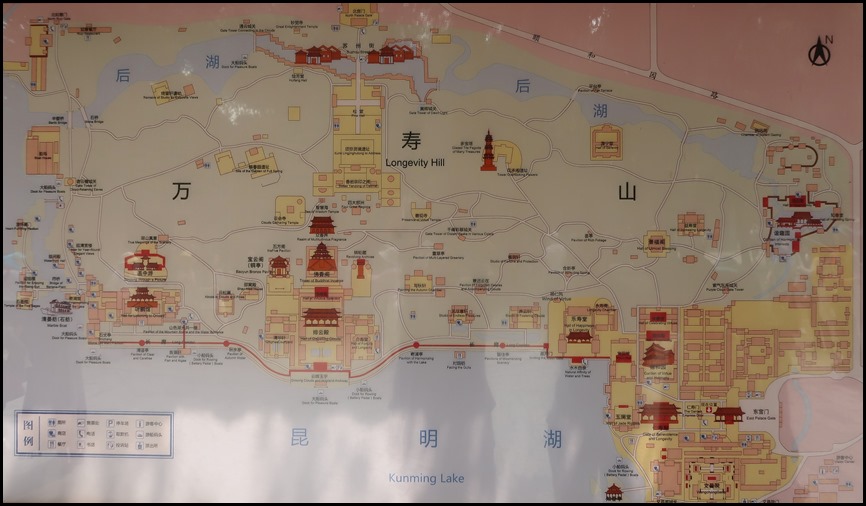 The China Tour Guide says: Situated in the Haidian District northwest of Beijing, Summer Palace is 15 kilometres (9 miles) from the downtown area. Being the largest and most well-preserved royal park in China, it greatly influences Chinese horticulture and landscaping with its famous natural views and cultural interests, which also has long been recognised as 'The Museum of Royal Gardens'. The construction of Summer Palace started in 1750 as a luxurious royal garden for royal families to rest and entertain. It later became the main residence of royal members in the end of the Qing Dynasty. However, like most of the gardens of Beijing, Summer Palace could not elude the rampages of the Anglo-French Allied Force and was destroyed by fire. According to historical documents, with original name as 'Qingyi Garden' (Garden of Clear Ripples), the Summer Palace (Yiheyuan) was renamed after its first reconstruction in 1888. It was also recorded that Empress Dowager Cixi embezzled navy funds to reconstruct it as a resort in which to spend the rest of her life. In 1900, Yiheyuan suffered another hit by the Eight-Power Allied Force and was repaired in the next two years. In 1924, it was open to the public. Summer Palace ranked amongst the World Heritage Sites by UNESCO in December 1998, as well as one of the first national AAAAA tourist spots in China.UNESCO declared the Summer Palace "a masterpiece of Chinese landscape garden design. The natural landscape of hills and open water is combined with artificial features such as pavilions, halls, palaces, temples and bridges to form a harmonious ensemble of outstanding aesthetic value". The Empress Dowager Cixi
was a first-class minx, she wanted at least one hundred and twenty dishes served
each suppertime, she would sniff a few, eat a few and the rest went in the bin.
One of her other irrational habits of waste was her slippers, one pair from
breakfast to lunch, the next pair until late afternoon and another pair until
bedtime, by todays standards – about two hundred dollars-worth a day. Historians
both in China and abroad have debated her reputation. The long time view
portrayed her as a ruthless despot whose reactionary policies led to the fall of
the Qing dynasty.
The Stone of the God of Longevity (Shouxing Shi). This stone was brought from Morgan Garden (now inside Peking University) when the Summer Palace was being reconstructed in 1886. This sleek, black stone is shaped like the God of Longevity, hence its name. And if you think that’s odd, the next chap is a unicorn. Really, we were told that being a mythological creature it may have been the sculptures image....Surely Uni means one ???? and why give him eel-like projections from his beak...... At least we found comfort in the incense burner.
The Hall of Benevolence and Longevity (Renshou Dian). First built in Emperor Qianlong’s reign (1750) during the Qing Dynasty, this building was named the Hall of Industrious Government when the whole Summer Palace area was called the Garden of Clear Ripples. In the Emperor Guangxu’s reign, the Hall was rebuilt (1886) where it had been before the Anglo-French Allied Forces burned it down in 1860. Citing the saying “One who is benevolent enjoys longevity” from the Analects of Confucius, it was renamed The Hall of Benevolence and Longevity. This was where Empress Dowager Cixi and Emperor Guangxu handled court affairs, accepted laudations and received foreign diplomats during their stay in the Summer Palace. As such, it was the Summer Palace’s main government building.
Looking to our left, a watchtower.
We headed for the lake to see Longevity Hill.
We bimbled through several quadrants with buildings set around the compass points used by various Emperors, Empresses, visitors and concubines.
Yiyun Guan (Yiyun Hall). These were the living quarters for Empress Long Yu when she, as Emperor Guangxu’s wife, stayed in the Summer Palace. A niece of Empress Dowager Cixi, she was named Empress in 1889. When Emperor Guangxu and the Empress Dowager Cixi died and Puyi became Emperor in 1908, she was elevated to the position of Empress Dowager with the imperial title Long Yu. In this capacity, she issued an order of abdication in 1911 after the Wuchang Uprising.
More quadrants and buildings before we began the bimble along the Long Corridor.
We ducked away from the Long Corridor at this impressive, highly decorated gate.
Near the base of Longevity Hill below the Palace’s raised buildings was a little gem. Qinghua Studio, named Studio of Serene Beauty, was formerly the Hall of 500 Arhats (one who is worthy) in the Garden of Clear Ripples. It was burnt down by the Anglo-French Allied Forces in 1860. The only available relics are the octagonal pool, the marble bridge and the tablet inscribed by Emperor Qianlong in memory of settling down the Dzungharian rebellion. When the Summer alace was rebuilt during Emperor Guangxu’s reign, a two-yard quadrangle was built on these remains. Its new name Qinghua Studio came from the line “Clear water and green trees serenely display their beauty” from a poem titled “A trip to the west pond” by Xie Hun, a poet from East Jin Dynasty (AD 317 – 420). The front and rear yards are linked by corridors.
A great place to visit for a few hours, lots to see and many quiet corners.
Hall for Listening to Orioles (Tingli Guan). Initially built by Emperor Qianlong (1736-1795) for his mother to watch operas, this theatre with its two-storey stage was named the “Hall for Listening to Orioles” because in old times, people often compared beautiful voices to the singing of orioles. It was burned down by the Anglo-French Allied Forces in 1860 and rebuilt during the reign of Emperor Guangxu (1875-1908). Before the completion of the Great Stage in the Garden of Virtue and Harmony, the Empress Dowager Cixi often watched operas and held banquets here. Now, the hall serves as a restaurant specialising in imperial court cuisine and is famous for having served over a hundred foreign leaders. We posed for pictures by the Marble Boat and took a dragon boat across the lake to the exit. Sadly, time to head to the airport for our flight to Xi’an.
ALL IN ALL A GORGEOUS PLACE TO SPEND THE SUMMER AN AMAZINGLY HUGE, OPEN SPACE |
